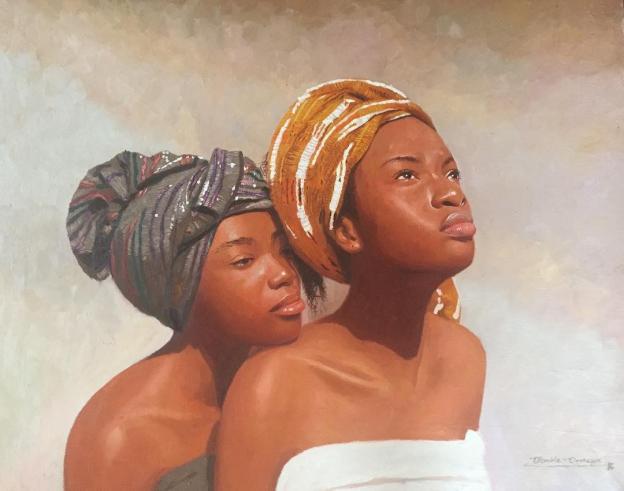
Quietly and meticulously 23-year-old Nigerian artist Ken Nwadiogbu smudges charcoal and draws with a pencil.
He's creating a lifelike masterwork in his small studio in Yaba, a mainland suburb of Lagos. The area is also known as "Yabacon Valley" because of the presence of numerous tech hubs and is a bustling neighbourhood of dilapidated colonial-era architecture. Nwadiogbu's studio is located on one of its quieter streets, away from the churn of Lagos's 17 million-plus people. He spends his days here, creating portraits from charcoal that are so real they could be mistaken for actual pictures and he's not the only one. Nwadiogbu is part of a growing community of artists in Lagos creating hyper-realistic charcoal and pencil paintings. Other young Nigerian creatives, like Arinze Stanley and Oscar Ukonu, are using their art to mirror real life. It's an aesthetic growing in popularity, amongst both the local art community and an avid global audience.
Hyperrealism: A rising art form?
In 2016 the hyperrealist community in Lagos drew global attention. Oil paintings by Lagos-based artist Olumide Oresegun quickly went viral on social media as people found it hard to believe they were not actual photographs.
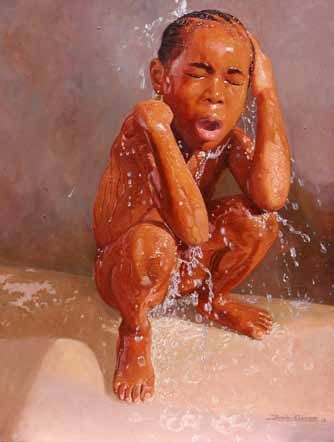
Since then, a growing number of Nigerians have identified as hyperrealist artists. Nigerian art curator Akinyemi Adetunji said this is a trend that has been made possible by social media."The Nigerian art circle used to be closed up. It was just made up of a few people who were avid collectors," Adetunji ."But because of the influence of social media, it has opened up the industry to external influences, too many eyes."
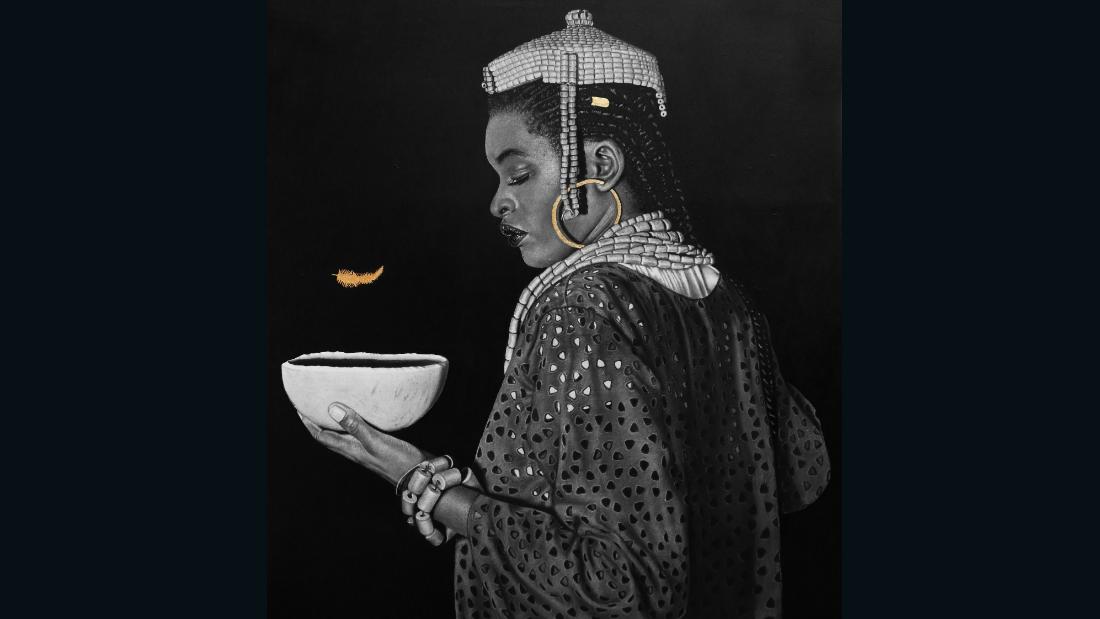
Nwadiogbu promotes his work to his 17,000 followers on Instagram, originally making his debut in the industry with celebrity portraits for Nigerian artists like Burna Boy, Tiwa Savage, Don Jazzy and Olumide. He then decided to do more with his talent by exploring social issues like gender equality, mental health and black power."I feel the society speaks and we listen," he said. "I feel it's my job to reply (to society), to try to change people's minds."
A voice for #MeToo

Nwadiogbu's most recent work was a piece for the global #MeToo movement a work he's so passionate about, he completed it within 24 hours."This is the first time I am finishing a work within 24 hours," he says. "It usually takes a month or two."In the #MeToo piece, two girls are wrapped in nylon, one is depressed and resigned to her fate; the other is angry and determined to push through the barrier. It's an emotional piece, born from thoughtfulness and his passion to give young African girls a voice.
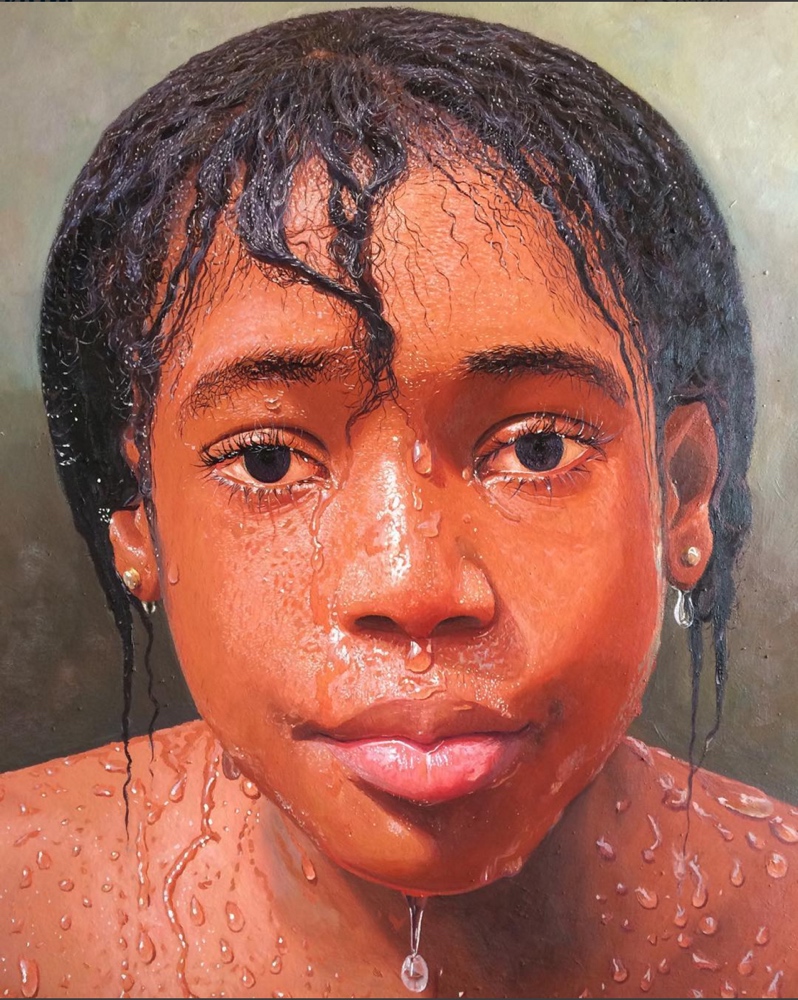
"I want the African girl to be like the second girl (in the painting) who are saying, 'I want to speak out. I want to loud my consciousness. I want to loud who I am.'"
An unlikely journey
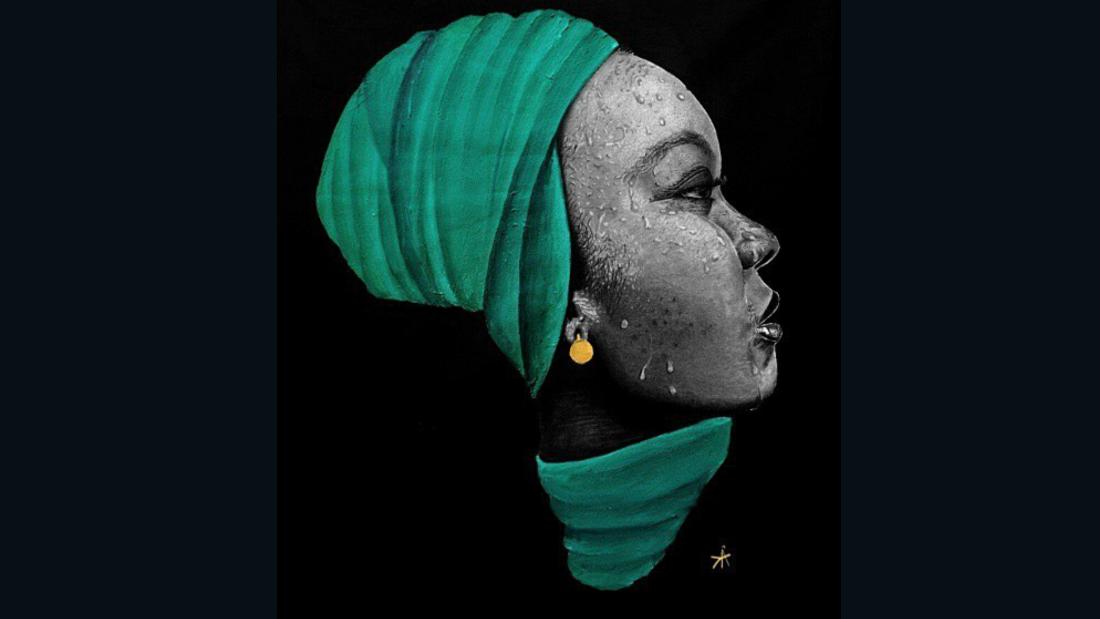
For a civil engineering graduate in Nigeria, the path Nwadiogbu has chosen is an unlikely one. But he says he is fulfilled and happy."I completely feel no regret whatsoever starting it and actually doing it."For Nwadiogbu his art matters, it's real. Nwadiogbu said the hyperrealist form helps artists channel their emotions and ideas. His own works are inspired by some of his personal experiences finding his way through a rough beginning, with people discouraging him from pursuing his passion."When you start having certain ideas for yourself, that's when societal issues, family issues and every other issue comes in. Being a young artist makes people ask: 'Are you not being too fast? Is this the best way for you?'""It gave me a very rough start in the art world."But Nwadiogbu is determined to speak up. "There's a lot going on in the society that we need to talk about," he said.
Making large-scale hyper-realistic art

Nwadiogbu has big ambitions for his work. He wants to see them housed in museums and galleries around the world."Because I like doing big works and I want my works to be in exhibitions and museums, I use big paper. I use some sort of pencils that you will not find on this side of the world."He improvises using materials from his immediate environment and clips from newspapers and magazines. The artist also said it's not easy to get his works exhibited in museums and galleries. It's one of the challenges of being a young artist working in Nigeria."If you are a young person people tell you to slow down," he said. "People say you are not matured in it or you have do not have that experience.""I do not see why the age of a person should restrict his ability to express himself."Does he get rewarded for his works? Yes, he said. Some of them sell for $5,000 to $10,000 per piece. One can take several weeks to complete."The problem with my kind of art is that it is time-consuming. Before you create three pieces, you have almost 10 or 15 collectors wanting to collect them."
Chiamonwu Joy
Chiamonwu Joy is another Nigerian hyperrealist artist. She is one of a few female artists in the scene. Joy was born in Borno, the northern part of Nigeria where she lived until the age of sixteen, where the Boko Haram group is active.
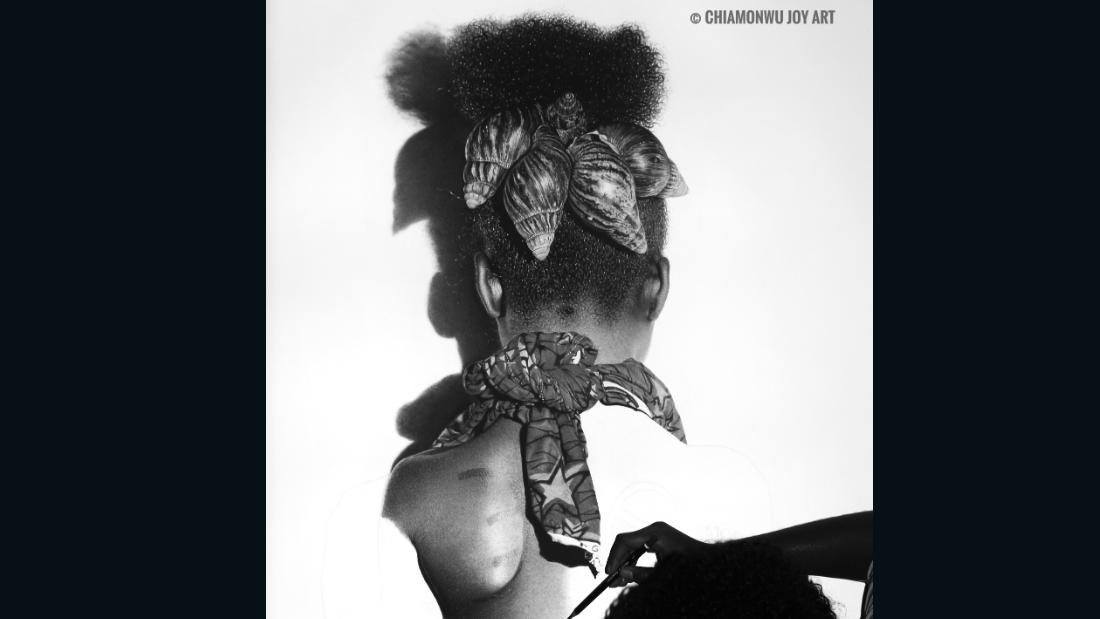
Joy did not go to school to study art but had the passion to develop her skills on her own. She was also the only student to sit for a Fine and Applied Art examination in West Africa.
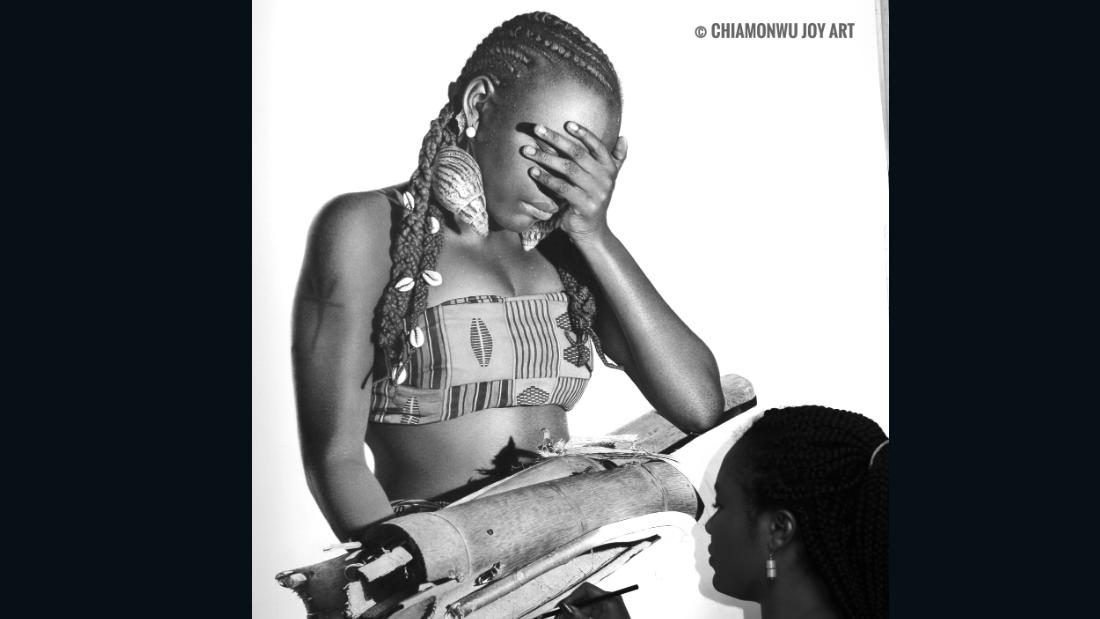
"I have always had a passion for art and creativity in general, when I was in primary school I drew on any surface I saw be it paper desk and even my clothes".
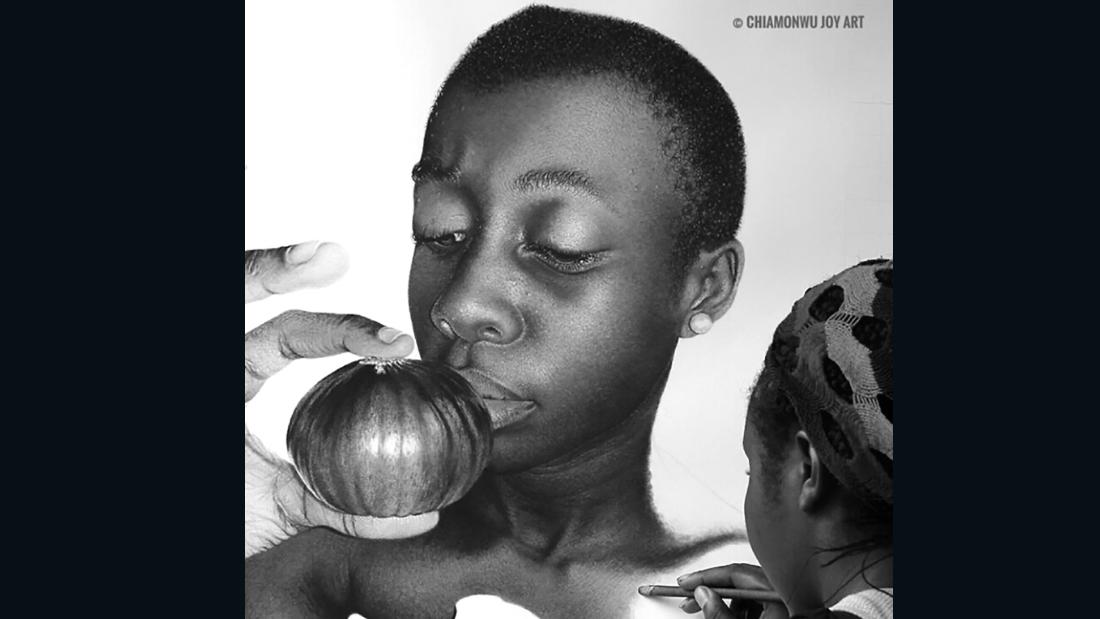
Joy uses graphite and charcoal and paper just like Nwadiogbu. Her work gained international notoriety when it was profiled in TeenVogue.
The future of Nigerian art
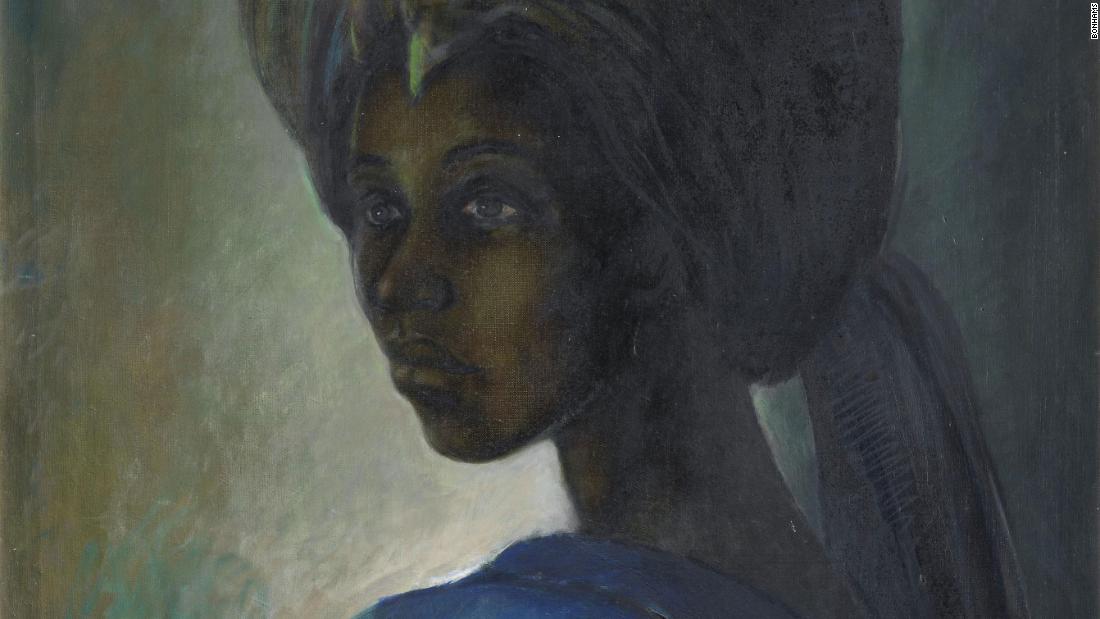
Nigerian art has been in the spotlight of late. The sale earlier this year of lost national treasure "Tutu" by Ben Enwonwu for $1.6 million captured the attention of the art world, selling for four times its estimated price. Enwonwu, who painted and sculpted from the 1950s to the early 1990s, has been attributed for redefining what it means to be an African artist. Now in a digital era, Lagos's hyperrealists like Joy and Nwadiogbu are building a movement and style, speaking to current issues in the city, and are projecting their art to a global audience who want art that's raw and real.